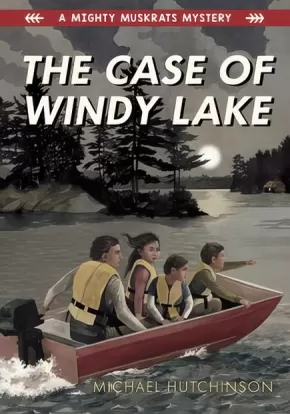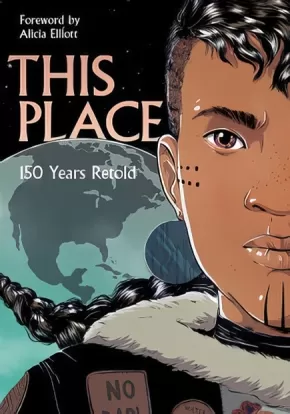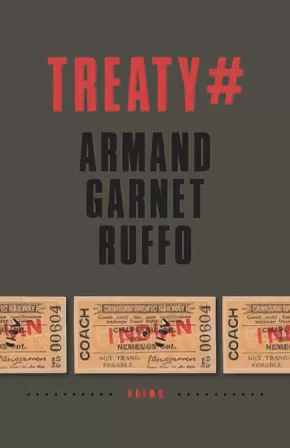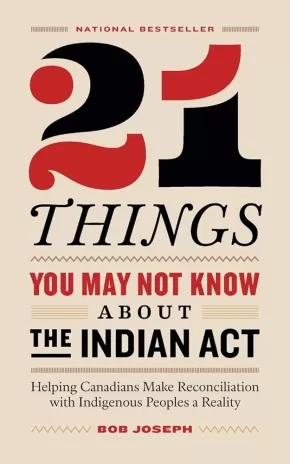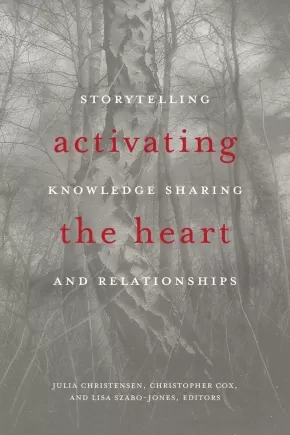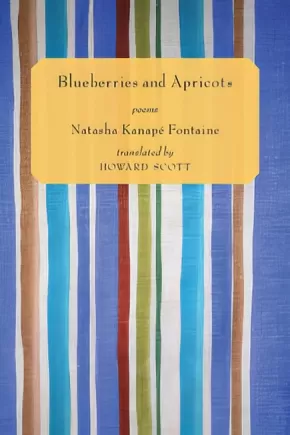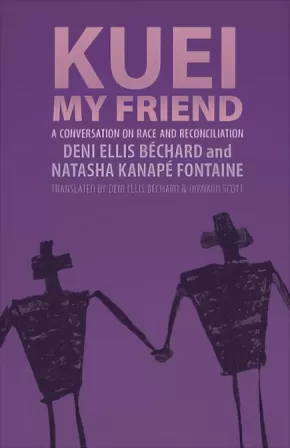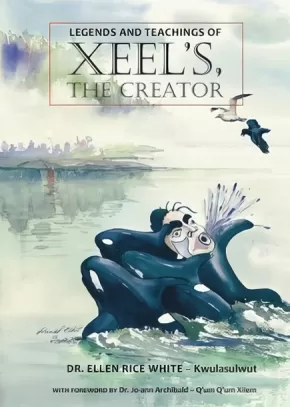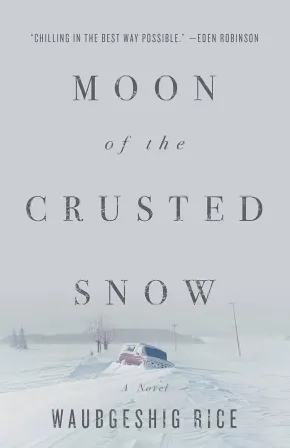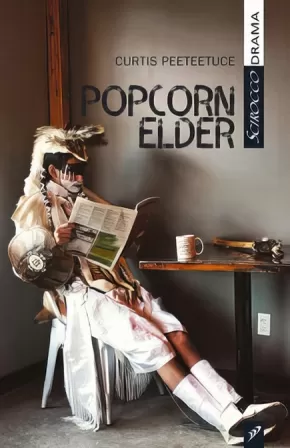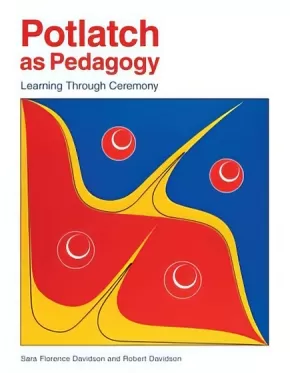
Canadian Indigenous Books for Schools 8 - 12 2019-2020
16
-
30
of
47 Results;
Sort By
Go To
of 4
The Case of Windy Lake
$11.95
Format:
Paperback
Text Content Territories:
Indigenous Canadian; First Nations; Cree (Nehiyawak);
ISBN / Barcode: 9781772600858
Synopsis:
Synopsis:
The Mighty Muskrats won’t let a mystery go unsolved!
Sam, Otter, Atim, and Chickadee are four inseparable cousins growing up on the Windy Lake First Nation. Nicknamed the Mighty Muskrats for their habit of laughing, fighting, and exploring together, the cousins find that each new adventure adds to their reputation. When a visiting archeologist goes missing, the cousins decide to solve the mystery of his disappearance. In the midst of community conflict, family concerns, and environmental protests, the four get busy following every lead. From their base of operations in a fort made out of an old school bus, the Mighty Muskrats won’t let anything stop them from solving their case!
Awards
- The Case of Windy Lake was the co-winner in Second Story Press’ 2018 Indigenous Writing Contest!
Reviews
"Chickadee's rez-tech savvy pairs well with her cousin Otter's bushcraft skills, and, along with Atim's brawn and brother Samuel's leadership, the four make a fine team. From Cree author Hutchinson, an Indigenous version of the Hardy Boys full of rez humor." — Kirkus, December 2018
"The Case of Windy Lake is a smart and thought-provoking mystery for middle-grade readers." — Foreword Reviews
Educator & Series Information
This fun and adventurous series, A Mighty Muskrat Mystery Series, puts an Indigenous spin on the classic Hardy Boys and Three Investigators books.
Recommended for ages 9-12.
Subjects & Themes: Environment (Protection, Protest); Civil Rights; Indigenous (Rights to Land, Rights to Natural Resources, Knowledge, Protection of Cultural Ceremonies).
Recommended in the Canadian Indigenous Books for Schools 2019-2020 resource list as being useful for grades 6-9 in the following subject areas: English Language Arts and Social Studies.
This book is available in French: Le Disparu de Lac-aux-Vents: Une enquête des rats musclés
Additional Information
134 pages | 5.25" x 7.50"
The Voyageurs: Forefathers of the Métis Nation
$20.00
Artists:
Format:
Paperback
Text Content Territories:
Indigenous Canadian; Métis;
ISBN / Barcode: 9781926795904
Synopsis:
Synopsis:
The Voyageurs: Forefathers of the Métis Nation tells an old story—integral to both the birth of the Métis Nation and to the development of Canada—in a new and engaging format. Zoey Roy has eloquently transformed the history of the voyageurs into a spoken-word performance poem which she has shared live at numerous events over the last several years. In this innovative resource, Zoey masterfully informs the reader and listener of the voyageurs’ history, background, and lifeways in a format popular with today’s youth. To fully appreciate Zoey’s masterful delivery, a DVD to accompany this book was essential. Combined with Jerry Thistle’s evocative illustrations and Norman Fleury’s Michif narration, this resource becomes a teaching tool, a work of art, and the impetus for further research all in one.
Educator Information
Grade Level: The publisher of this book recommends it for all ages.
Dual-language: English and Michif.
Includes a DVD.
Recommended in the Canadian Indigenous Books for Schools 2019-2020 resource list as being useful for grades 5-10 with regard to these subjects: English Language Arts, Art, Social Studies.
Additional Information
45 pages | 10.98" x 8.42"
This Place: 150 Years Retold
$39.00
Format:
Paperback
Text Content Territories:
Indigenous Canadian;
ISBN / Barcode: 9781553797586
Synopsis:
Synopsis:
Explore the past 150 years through the eyes of Indigenous creators in this groundbreaking graphic novel anthology. Beautifully illustrated, these stories are an emotional and enlightening journey through Indigenous wonderworks, psychic battles, and time travel. See how Indigenous peoples have survived a post-apocalyptic world since Contact.
Watch for new stories and familiar characters:
- Métis businesswoman Annie Bannatyne and Louis Riel
- Oka Crisis, Meech Lake Accord, and Kelowna Accord
- the Berger Inquiry into the Mackenzie Valley Pipeline
- Jack Fiddler, an Anishinaabe shaman charged as a serial killer
- Rosie, an Inuk girl coming of age during WWII
- wâpanacâhkos, an Indigenous woman sent back from the future to the early 2000s
- fishing raids and salmon wars in Listuguj, Quebec
- Francis Pegahmagabow, WWI sniper and veterans’ rights activist
- the impact of the Sixties Scoop and the child welfare system
- Chief Billy Assu and the potlatch bans in British Columbia
Reviews
Niigaanwewidam James Sinclair, one of the contributors to this work, says the book is, an “opportunity to shine a light on the stories most Canadians haven’t heard, to learn from Indigenous communities from 1867 to present day—whether these stories are influenced by the creation of Canada or not."
"…breathtaking comics anthology…this mix of powerful storytelling and memorable illustrations is a place to begin a dialogue with Indigenous peoples in Canada." —The Globe and Mail
"The anthology is visually gorgeous. Each story is powerfully conveyed, reflecting a time and moment in the Indigenous history of Canada…great read for any age." —Quill & Quire, starred review
"This Place is the graphic novel I’ve waited my whole life for, and the graphic novel Canada has needed for 150 years. The stories contained within its pages are both beautifully rendered and vitally necessary. They represent a history not only largely untold and unknown, but one obscured, hidden from sight, so that other stories may occupy a privileged place in the defining a national story. Their importance is exquisitely captured on these pages, told by some the leading artists working today. This is an essential book, for comic fans, teachers and anyone who wants to learn the stories of this place we now share." —Jesse Wente, broadcaster and film critic
"A landmark collection of Indigenous comics that redraws how we understand the past, present, and future of Indigenous communities and cultures since Confederation. Each chapter immerses us in a gripping story about real people brought to life through vivid and affecting artwork. This collection proves the power of comics storytelling to create fresh pathways to knowledge and new ways of envisioning Indigenous experiences." —Candida Rifkind, University of Winnipeg
"This is the power of storytelling. It’s going deeper and truer than the history books and the newspaper accounts. It’s bringing the stories to the people for the people and doing it for the right reasons: to teach and to illuminate. This Place: 150 Years Retold is the dawn to a new storytelling tradition that doesn’t need to be held back. It should be shouted forward from now on." —Helen Kubiw, CanLit for LittleCanadians
Educator Information
This graphic novel is recommended for ages 15+.
Recommended in the Canadian Indigenous Books for Schools 2019-2020 resource list for grades 7 to 12 for Art Education, English Language Arts, Law, and Social Studies.
These stories refer to real incidents and include graphic violence, abuse, and death.
A teacher's guide is available: This Place: 150 Years Retold Teacher Guide
Additional Information
250 Pages
Treaty# (3 in Stock)
$18.00
Format:
Paperback
Text Content Territories:
Indigenous Canadian;
ISBN / Barcode: 9781928088769
Synopsis:
Synopsis:
A treaty is a contract. A treaty is enduring. A treaty is an act of faith. A treaty at its best is justice. It is a document and an undertaking. It is connected to place, people and self. It is built on the past, but it also indicates how the future may unfold. Armand Garnet Ruffo's TREATY# is all of these. In this far-ranging work, Ruffo documents his observations on life - and in the process, his own life - as he sets out to restructure relationships and address obligations nation-to-nation, human-to-human, human-to-nature. Now, he undertakes a new phase in its restoration. He has written his TREATY# like a palimpsest over past representations of Indigenous bodies and beliefs, built powerful connections to his predecessors, and discovered new ways to bear witness and build a place for them, and all of us, in his poems. This is a major new work from an important, original voice.
Educator Information
Recommended in the Canadian Indigenous Books for Schools 2019-2020 resource list as being useful for grades 8 to 12 for English Language Arts and Social Studies.
Historical terms like "Indian" and "half-breed" are used in this work.
Additional Information
80 pages | 5.75" x 8.50"
Understanding Northwest Coast Indigenous Jewelry
$24.95
Format:
Paperback
Text Content Territories:
Indigenous American; Indigenous Canadian;
ISBN / Barcode: 9781771642972
Synopsis:
Synopsis:
As beautiful as it is useful, Understanding Northwest Coast Indigenous Jewelry is an invaluable tool for anyone interested in learning about or deepening their understanding of a fascinating craft.
Indigenous hand-engraved jewelry from the Pacific Northwest Coast is among the most distinctive, innovative, and highly sought-after art being produced in North America today. But these artworks are more than just stunning—every bracelet, ring, and pendant is also the product of a fascinating backstory, a specialized set of techniques, and a talented artist.
With a clearly written text, a foreword by award-winning First Nations artist Corrine Hunt, and more than one hundred striking color photographs and sidebars, Understanding Northwest Coast Indigenous Jewelry offers an illuminating look at an exquisite craft and the context in which it is practiced.
Providing a step-by-step overview of various techniques, the book also introduces the specifics of formline design, highlights the traits of the most common animal symbols used, offers tips for identification, and features biographies and works from over fifty of the Coast’s best-known jewelers. Finally, it delves into the history of the art form, from the earliest horn and copper cuff bracelets to cutting-edge contemporary works and everything in between.
Educator Information
Recommended in the Canadian Indigenous Books for Schools 2019-2020 resource list for grades 9 to 12 for Arts Education, English Language Arts, and Social Studies.
Additional Information
192 pages | 6.00" x 9.00"
21 Things You May Not Know About the Indian Act
$21.00
Format:
Paperback
Text Content Territories:
Indigenous Canadian;
ISBN / Barcode: 9780995266520
Synopsis:
Synopsis:
Based on a viral article, 21 Things You May Not Know About the Indian Act is the essential guide to understanding the legal document and its repercussion on generations of Indigenous Peoples, written by a leading cultural sensitivity trainer.
Since its creation in 1876, the Indian Act has shaped, controlled, and constrained the lives and opportunities of Indigenous Peoples, and is at the root of many enduring stereotypes. Bob Joseph’s book comes at a key time in the reconciliation process, when awareness from both Indigenous and non-Indigenous communities is at a crescendo. Joseph explains how Indigenous Peoples can step out from under the Indian Act and return to self-government, self-determination, and self-reliance—and why doing so would result in a better country for every Canadian. He dissects the complex issues around truth and reconciliation, and clearly demonstrates why learning about the Indian Act’s cruel, enduring legacy is essential for the country to move toward true reconciliation.
Reviews
"Increasing Canadians' knowledge about the terrible foundation this country has been built on is a critical part of reconciliation. Bob Joseph has highlighted some of the unbelievable provisions of the Indian Act and how they have impacted First Nations in Canada and gives a brief overview of what we may replace it with going forward. His book provides helpful context to the dialogue that needs to take place in Canada." — Kim Baird, O.C., O. B. C.; Owner, Kim Baird Strategic Consulting; Member of the Tsawwassen First Nation; Negotiator of the Tsawwassen First Nation Treaty
"From declaring cultural ceremonies illegal, to prohibiting pool hall owners from granting Indigenous people entrance, from forbidding the speaking of Indigenous languages, to the devastating policy that created residential schools, Bob Joseph reveals the hold this paternalistic act, with its roots in the 1800s, still has on the lives of Indigenous people in Canada in the 21st century. This straightforward book is an invaluable resource. There is much for non-Indigenous people to learn and to do. But equally important, there is much to unlearn and to undo. The time is right for this book. Thank you, Bob Joseph. Gilakasla." — Shelagh Rogers, O.C.; Truth and Reconciliation Commission of Canada Honourary Witness
"Bob’s ability to navigate the complex history of the Indian Act is a wonder to behold. He provides depth and knowledge for Indigenous and non-Indigenous scholars alike. Whether you are an Indigenous scholar or a neophyte, his articulate, insightful and comprehensive analysis on the history of the Indian Act provides a sound understanding on the present narrative of Indigenous peoples in Canada. By way of the Indian Act, this book provides an excellent analysis of the ongoing relationship and predicament between provincial and federal governments and Indigenous peoples in the 21st century." — JP Gladu, President and CEO of the Canadian Council for Aboriginal Business
Educator Information
Recommended in the Canadian Indigenous Books for Schools 2019-2020 resource list as being useful for grades 4-12 and as a teacher resource in these subject areas: English Language Arts and Social Studies.
Additional Information
160 pages | 5.22" x 8.05"
Activating the Heart: Storytelling, Knowledge Sharing, and Relationships
$26.99
Editors:
Format:
Paperback
Text Content Territories:
Indigenous;
ISBN / Barcode: 9781771122191
Synopsis:
Synopsis:
Activating the Heart is an exploration of storytelling as a tool for knowledge production and sharing to build new connections between people and their histories, environments, and cultural geographies. The collection pays particular attention to the significance of storytelling in Indigenous knowledge frameworks and extends into other ways of knowing in works where scholars have embraced narrative and story as a part of their research approach.
In the first section, Storytelling to Understand, authors draw on both theoretical and empirical work to examine storytelling as a way of knowing. In the second section, Storytelling to Share, authors demonstrate the power of stories to share knowledge and convey significant lessons, as well as to engage different audiences in knowledge exchange. The third section, Storytelling to Create, contains three poems and a short story that engage with storytelling as a means to produce or create knowledge, particularly through explorations of relationship to place.
The result is an interdisciplinary and cross-cultural dialogue that yields important insights in terms of qualitative research methods, language and literacy, policy-making, human–environment relationships, and healing. This book is intended for scholars, artists, activists, policymakers, and practitioners who are interested in storytelling as a method for teaching, cross-cultural understanding, community engagement, and knowledge exchange.
Educator Information
This book would be useful for the following subjects: Indigenous Studies, Literary Criticism, Creative Writing, and Social Science.
Recommended in the Canadian Indigenous Books for Schools 2019-2020 resource list as being useful for grades 11-12 for English Language Arts and Social Studies.
Additional Information
220 pages | 6.00" x 9.00"
Edited by Julia Christensen, Christopher Cox and Lisa Szabo-Jones.
Authenticity Note: Contributors to this work identify with various First Nations and Metis communities. Therefore, the Authentic Indigenous Text label has been applied. It is up to readers to determine if this will work as an authentic resource for their purposes.
Blueberries and Apricots
$20.95
Format:
Paperback
Text Content Territories:
Indigenous Canadian; First Nations; Innu (Montagnais-Naskapi);
ISBN / Barcode: 9781988449326
Synopsis:
Synopsis:
In this, her third volume of poetry, this Aboriginal writer from Quebec again confronts the loss of her landscape and language.
On my left hip
a face
I walk
I walk upright
like a shadow
a people on my hip
a boatload of fruit
and the dream inside
women and children first
"A cry rises in me and transfigures me. The world waits for woman to come back as she was born: woman standing, woman powerful, woman resurgent. A call rises in me and I've decided to say yes to my birth."
Reviews
"Poetess, painter, actress, slammer ... Natasha Kanapé Fontaine speaks with a soft voice, but her words are powerful. In a few years, the young Innue has become a model for young people and for her community." —La Presse
Educator Information
Recommended in the Canadian Indigenous Books for Schools 2019-2020 resource list as being useful for grades 9-12 for English Language Arts and Social Studies.
Additional Information
72 pages | 5.00" x 7.50" | Translated from French by Howard Scott.
Kuei, My Friend: A Conversation on Race and Reconciliation
$19.95
Format:
Paperback
Text Content Territories:
Indigenous Canadian; First Nations; Innu (Montagnais-Naskapi);
ISBN / Barcode: 9781772011951
Synopsis:
Synopsis:
Kuei, My Friend is an engaging book of letters: a literary and political encounter between Innu poet Natasha Kanapé Fontaine and Québécois-American novelist Deni Ellis Béchard. Choosing the epistolary form, they decided to engage together in a frank conversation about racism and reconciliation.
Intentionally positioned within the contexts of the Idle No More movement, Canada’s Truth and Reconciliation Commission, and the National Inquiry into Missing or Murdered Aboriginal Women and Girls, the letters in Kuei, My Friend pose questions in a reciprocal manner: how can we coexist if our common history involves collective and personal episodes of shame, injury, and anger? how can we counteract misunderstandings of the Other, which so often lead to contempt and rejection? how can we educate non-Indigenous communities about the impact of cultural genocide on the First Peoples and the invisible privileges resulting from historical modes of domination?
In an attempt to open a sincere and productive dialogue, Kanapé Fontaine and Ellis Béchard use their personal stories to understand words and behaviours that are racist or that result from racism. With the affection and intimacy of a friend writing to a friend, Natasha recounts to her addressee her discovery of the residential schools, her obsession with the Oka Crisis of 1990, and her life on the Pessamit reserve. Reciprocating, Deni talks about his father’s racism, the segregation of African-Americans and civil rights, and his identity as a Québécois living in the English-speaking world.
By sharing honestly even their most painful memories, these two writers offer an accessible, humanist book on the social bridge-building and respect for difference. Kuei, My Friend is accompanied by a chronology of events, a glossary of relevant terms in the Innu language, and, most importantly, a detailed teacher’s guide that includes topics of discussion, questions, and suggested reflections for examination in a classroom setting.
Educator Information
Recommended resource for Grades 10-12 in these areas: BC First Peoples, Contemporary Indigenous Studies, English First Peoples, English Studies, Literary Studies.
Includes an Innu-aimun glossary and a teacher's guide to help classroom discussion facilitation.
Recommended in the Canadian Indigenous Books for Schools 2019-2020 resource list as being useful for grades 10 to 12 for English Language Arts and Social Studies.
This resource is also available in French: Kuei, je te salue: Conversation sur le racisme.
Additional Information
176 pages | 6.21" x 8.46" | Translated by & Deni Ellis Béchard & Howard Scott
Legends and Teachings of Xeel's, The Creator
$19.95
Format:
Paperback
Text Content Territories:
Indigenous Canadian; First Nations; Salish; Coast Salish; Snuneymuxw ;
ISBN / Barcode: 9781926886558
Synopsis:
Synopsis:
Snuneymuxw Elder and storyteller Ellen White shares four stories handed down to her from her grandparents and their ancestors.
Legends and Teachings of Xeel’s, the Creator contains four short stories centering around themes such as communication, connection, teaching and respect. The stories featured include: “The Creator and the Flea Lady, The Boys Who Became a Killer Whale, The Sockeye That Became a Rainbow, and The Marriage of the Seagull and the Crow.” Each story is accompanied by a companion piece developed by the storyteller Ellen Rice White (Kwulasulwut) which provides cultural context and an explanation of some of the lessons found in each story.
In the story “The Creator and the Flea Lady”, a Flea mother asks for help saving her premature infant. The Flea woman is reminded of her connection to the many energies surrounding her by Xeel’s and the energies themselves.
In “Boys Who Became a Killer Whale”, eager learners frustrated with the pace and demeanour of their traditional teachers reach beyond what they know and encounter tragedy.
In both the “Sockeye That Became a Rainbow” and “The Marriage of the Seagull and the Crow”, respect and acceptance of the differences of others are central components of the stories. The protagonists struggle with their relationships and the differences they have with their partners.
Educator Information
Please Note: These are a set of uncensored, traditional stories. The content is meant to provide traditional teachings.
Each of the four stories in the book is accompanied by a discussion piece that provides cultural context and questions for the reader to consider. Huĺq̓ umín̓ um̓ language is used throughout. A glossary can be found at the back of the book.
Some subject matter may not be suitable for some readers.
Recommended in the Canadian Indigenous Books for Schools 2019-2020 resource list as being useful for grades 9 to 12 for English Language Arts.
Additional Information
112 pages | 6.75" x 9.75"
Michi Saagiig Nishnaabeg: This Is Our Territory
$22.00
Format:
Paperback
Text Content Territories:
Indigenous Canadian; First Nations; Anishinaabeg; Mississauga; Curve Lake First Nation;
ISBN / Barcode: 9781927886090
Synopsis:
Synopsis:
In this deeply engaging oral history, Doug Williams, Anishinaabe elder, teacher and mentor to Leanne Betasamosake Simpson, recounts the history of the Michi Saagiig Nisnaabeg, tracing through personal and historical events, and presenting what manifests as a crucial historical document that confronts entrenched institutional narratives of the history of the region. Edited collaboratively with Simpson, the book uniquely retells pivotal historical events that have been conventionally unchallenged in dominant historical narratives, while presenting a fascinating personal perspective in the singular voice of Williams, whose rare body of knowledge spans back to the 1700s. With this wealth of knowledge, wit and storytelling prowess, Williams recounts key moments of his personal history, connecting them to the larger history of the Anishinaabeg and other Indigenous communities.
Reviews
"This book gives us an alternative perspective on historical record that is both personal and collective. Doug Williams reminds us of the generations of Indigenous knowledge keepers and of a history that stretches back prior to European contact-including the disruption of contact. This book is his gift to the Michi Saagiig and to all Anishinaabek. It is also a gift to Canadians who want to help decolonize this country. - Armand Garnet Ruffo
"Storytelling is not just a gift. It's not just an art. It's also a responsibility: the weaving together of history, philosophy, culture and humour frequently highlighting a culture's perspective on the world. Doug Williams has been doing this as long as I can remember. He lives the culture, not just talks about it. The people and places he talks about in Michi Saagiig Nishnaabeg are more a part of our history then all the things going on in Ottawa." - Drew Hayden Taylor
Educator Information
Recommended in the Canadian Indigenous Books for Schools 2019-2020 resource list as being useful for grades 9 to 12 for Creative Writing, English Language Arts, Media Studies, and Social Studies.
Additional Information
168 pages | 5.50" x 8.50"
Moon of the Crusted Snow: A Novel
$22.95
Format:
Paperback
Text Content Territories:
Indigenous Canadian; First Nations; Anishinaabeg;
ISBN / Barcode: 9781770414006
Synopsis:
Synopsis:
A daring post-apocalyptic novel from a powerful rising literary voice.
With winter looming, a small northern Anishinaabe community goes dark. Cut off, people become passive and confused. Panic builds as the food supply dwindles. While the band council and a pocket of community members struggle to maintain order, an unexpected visitor arrives, escaping the crumbling society to the south. Soon after, others follow.
The community leadership loses its grip on power as the visitors manipulate the tired and hungry to take control of the reserve. Tensions rise and, as the months pass, so does the death toll due to sickness and despair. Frustrated by the building chaos, a group of young friends and their families turn to the land and Anishinaabe tradition in hopes of helping their community thrive again. Guided through the chaos by an unlikely leader named Evan Whitesky, they endeavor to restore order while grappling with a grave decision.
Blending action and allegory, Moon of the Crusted Snow upends our expectations. Out of catastrophe comes resilience. And as one society collapses, another is reborn.
Reviews
“This slow-burning thriller is also a powerful story of survival and will leave readers breathless.” — Publishers Weekly
"Rice seamlessly injects Anishinaabe language into the dialogue and creates a beautiful rendering of the natural world. . . This title will appeal to fans of literary science fiction akin to Cormac McCarthy as well as to readers looking for a fresh voice in indigenous fiction.” — Booklist
“Perfect for those who read Iain Reid's Foe this summer and are looking for something in the same vein.” — The Globe and Mail
“The creeping tension and vividly drawn landscapes make Waubgeshig Rice’s characters choices all the more real.” — Toronto Star
“Moon of the Crusted Snow asks how do we live in a good way during the collapse of the infrastructure that supports modern life? For Evan Whitesky, the answer lies in rekindling Ojibwe, the old ways, language and culture. For other characters, when the food runs out, all options are on the table, no matter how gruesome. As the tensions between those surviving the end of modern civilization build to a harrowing conclusion, Rice deftly weaves tender family moments with his brutal survival scenes in the unforgiving northern Ontario winter. Chilling in the best way possible.” — Eden Robinson, award-winning author of Monkey Beach and Son of a Trickster
Educator Information
Recommended in the Canadian Indigenous Books for Schools 2019-2020 resource list as being useful for grades 10 to 12 for English Language Arts.
Contains strong language and mature subject matter relating to violence and death.
Additional Information
224 pages | 5.50" x 8.50"
My Heroes Have Always Been Indians: A Century of Great Indigenous Albertans
$24.95
Format:
Paperback
Text Content Territories:
Indigenous Canadian;
ISBN / Barcode: 9781550597547
Synopsis:
Synopsis:
In a series of inspirational profiles, Cora Voyageur celebrates 100 remarkable Indigenous Albertans whose achievements have enriched their communities, the province, and the world.
As a child, Cora rarely saw Indigenous individuals represented in her history textbooks or in pop culture. Willie Nelson sang “My Heroes Have Always Been Cowboys,” but Cora wondered, where were the heroes who looked like her? She chose the title of her book in response, to help reflect her reality.
In fact, you don’t have to look very hard to find Indigenous Albertans excelling in every field, from the arts to business and everything in between. Cora wrote this book to ensure these heroes receive their proper due.
Some of the individuals in this collection need no introduction, while others are less well known. From past and present and from all walks of life, these 100 Indigenous heroes share talent, passion, and legacies that made a lasting impact.
Read about:
- Douglas Cardinal, the architect whose iconic, flowing designs grace cities across Alberta, across Canada, and in Washington, DC,
- Nellie Carlson, a dedicated activist whose work advanced the cause of Indigenous women and the education of Indigenous children,
- Alex Janvier, whose pioneering work has firmly established him as one of Canada’s greatest artists,
- Moostoos, “The Buffalo,” the spokesperson for the Cree in Treaty 8 talks who fought tirelessly to defend his People’s rights,
- And many more.
Educator Information
Recommended in the Canadian Indigenous Books for Schools 2019-2020 resource list for grades 10 to 12 for these subject areas: English Language Arts, Social Studies.
This book focuses on Indigenous Albertans.
Additional Information
240 pages | 5.90" x 9.00"
Popcorn Elder
$15.95
Format:
Paperback
Text Content Territories:
Indigenous Canadian; First Nations; Cree (Nehiyawak);
ISBN / Barcode: 9781927922392
Synopsis:
Synopsis:
Darren, newly on parole from prison, has been ordered by the court to live with his father on the rez. Wally and Darren have always had a contentious relationship: Wally is a problem drinker, and Darren's got a short fuse. But Wally tells his son that he's changed, has stopped drinking and started going to ceremony, and he urges Darren to do the same. As old family secrets start to be revealed, the father and son grapple with complex issues.
Popcorn Elder examines the problem of "plastic shamans" who offer spirituality at a price. It looks at a community working to face its demons and heal past trauma. And at the heart of the play is the story of a father and son, filled with anger, guilt, and pain, seeking connection and reconciliation.
Through flashbacks, a combination of Cree and English, and an unforgettable cast of characters, Popcorn Elder tells the story of one family's journey toward hope.
Educator Information
Contains sexual abuse references and explicit language.
Recommended in the Canadian Indigenous Books for Schools 2019-2020 resource list for grades 10 to 12 for Acting, Drama, English Language Arts, and Social Studies.
Additional Information
72 pages | 5.50" x 8.50"
Potlatch as Pedagogy: Learning Through Ceremony
$28.00
Format:
Paperback
Text Content Territories:
Indigenous Canadian; First Nations; Haida;
Grade Levels: University/College;
ISBN / Barcode: 9781553797739
Synopsis:
Synopsis:
Inspired by Haida ceremonial practice, father and daughter present a model for learning that is holistic, relational, practical, and continuous.
In 1884, the Canadian government enacted a ban on the potlatch, the foundational ceremony of the Haida people. The tradition, which determined social structure, transmitted cultural knowledge, and redistributed wealth, was seen as a cultural impediment to the government’s aim of assimilation.
The tradition did not die, however; the knowledge of the ceremony was kept alive by the Elders through other events until the ban was lifted. In 1969, a potlatch was held. The occasion: the raising of a totem pole carved by Robert Davidson, the first the community had seen in close to 80 years. From then on, the community publicly reclaimed, from the Elders who remained to share it, the knowledge that has almost been lost.
Sara Florence Davidson, Robert’s daughter, would become an educator. Over the course of her own education, she came to see how the traditions of the Haida practiced by her father—holistic, built on relationships, practical, and continuous—could be integrated into contemporary educational practices. From this realization came the roots for this book.
Reviews
"Potlatch as Pedagogy is wonderfully wise, hopeful, heartful, eloquent, and loving! Every teacher candidate and teacher needs to read this book. The authors expertly evoke the history and culture of the Haida as they call forth the sadness as well as the hope and joy of generations of people who were misunderstood and mistreated. In this time of Truth and Reconciliation, we all need to attend to this book." —Dr. Carl Leggo, Professor, Department of Language and Literacy Education, University of British Columbia
Educator Information
For all teachers.
Recommended in the Canadian Indigenous Books for Schools 2019-2020 resource list as a Teacher Resource for grades 10 to 12 with reference to Social Studies.
Additional Information
200 pages | 7.00" x 9.00"
Sort By
Go To
of 4

